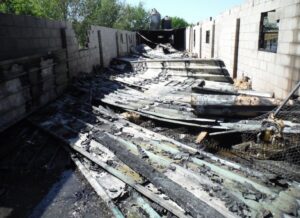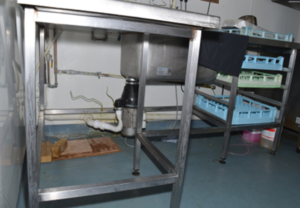Leeds bird farm fined after worker suffers serious burns in shed blaze
A bird farm in Leeds has been fined £26,680 after a fire in a rearing shed resulted in serious injuries to one of its employees.
The incident happened at Yorkshire Game Farm, in Woodlesford, on 6th May 2020. The employee suffered second and third degree burns, and was kept in an induced coma at Pinderfields Hospital for five days, and not released from hospital until 12 days later.
Leeds Magistrates’ Court heard that the employee had been installing gas heaters in a pheasant rearing shed, ready for a new crop of birds. Upon turning on the gas supply and lighting the heaters, the shed burst into flames, causing him significant burns and totally destroying the shed.

An investigation by the Health and Safety Executive (HSE) found that when the employee came to commission the heaters, it was highly likely that a leak of gas ignited, setting fire to the shed and the bedding put down for the birds.
The reason for the gas leak was not identified as all the gas piping within the building was destroyed, but gas equipment outside the building was cracked and perished, indicating that it had not been maintained.
Yorkshire Game Farm of Woodlesford, Leeds, West Yorkshire pleaded guilty to breaching Section 2 (1) of the Health & Safety at Work etc Act 1974. The company has been fined £26,680.00 and ordered to pay £6495.20 in costs.
HSE inspector Howard Whittaker said: “This fire was most likely caused by gas leaking from poorly maintained equipment, and could have led to this young man’s death. He was very lucky to escape with his life, but he will suffer increased sensitivity to sunlight for the rest of his life.
“The gas pipelines and equipment we found outside the shed was perished and cracked, indicating that it had not been maintained in a safe condition leading to the leak of gas causing an initial flash, followed by a fire inside the shed.
“In addition, a gas tightness test should have been carried out once the equipment had been installed and before the gas equipment was used, to identify if there were any leaks.
”In sentencing Yorkshire Game Farm, the district judge remarked this was an accident waiting to happen.
“Had the equipment been properly maintained and operated, in line with industry standards and good practice, this dreadful accident would not have happened.
This prosecution was supported by HSE enforcement lawyer Jayne Wilson and paralegal Louisa Shaw.
Notes to Editors:
- The Health and Safety Executive (HSE) is Britain’s national regulator for workplace health and safety. We prevent work-related death, injury and ill health through regulatory actions that range from influencing behaviours across whole industry sectors through to targeted interventions on individual businesses. These activities are supported by globally recognised scientific expertise. gov.uk
- More about the legislation referred to in this case can be found at: legislation.gov.uk/
- HSE news releases are available at http://press.hse.gov.uk
- Guidance is available, including on the safe use of work equipment


